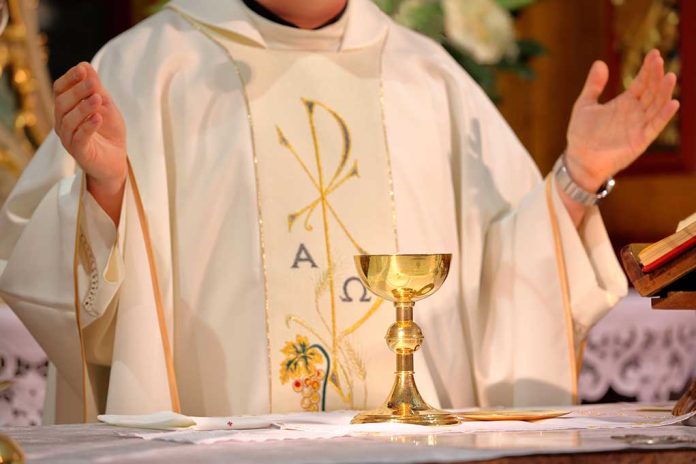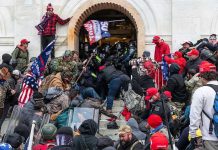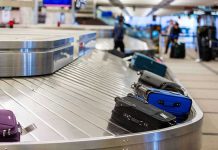
When the Vatican’s white smoke billows from the Sistine Chapel chimney, 1.4 billion Catholics worldwide will have a new spiritual leader following an ancient process shrouded in secrecy and tradition dating back to the 13th century.
Key Takeaways
- The papal conclave begins 15-20 days after a pope’s death, with only cardinals under 80 years old eligible to participate in the secretive election process.
- Cardinals are sequestered in the Sistine Chapel with no outside communication; they take an oath of secrecy under threat of excommunication.
- White smoke signals a successful election requiring a two-thirds majority, while black smoke indicates the need for continued voting.
- The elected pope is announced with the Latin proclamation “Habemus Papam” (“We have a pope”) before giving his first blessing.
- During the vacancy, Cardinal Kevin Farrell serves as camerlengo, administering the Holy See until a new pope is chosen.
Ancient Traditions Guide the Papal Selection Process
Following a pope’s death or resignation, the governance of the Catholic Church temporarily passes to the College of Cardinals. Within 15 to 20 days, 135 eligible cardinals under age 80 gather in Rome to elect a successor through a process steeped in tradition. The conclave—derived from Latin “cum clave” meaning “with a key”—refers to the practice of literally locking cardinals inside until they reach a decision.
Before the conclave begins, cardinals conduct general congregations at the Vatican, discussing Church needs and preparing for the election. During this time, Cardinal Kevin Farrell serves as camerlengo, administering Vatican affairs. The actual conclave commences with a special Mass in St. Peter’s Basilica, followed by the cardinals’ solemn procession to the Sistine Chapel, where each takes an oath of absolute secrecy.
Voting, Secrecy and Smoke Signals
Once inside the Sistine Chapel, cardinals are completely cut off from the outside world—no phones, no internet, no television. They reside in the simple Domus Sanctae Marthae (St. Martha’s House) during the conclave, maintaining focus on their sacred duty. The voting process involves paper ballots where cardinals write their choice, then fold and place them in a chalice at the altar beneath Michelangelo’s “Last Judgment.”
Four voting sessions occur daily—two in the morning, two in the afternoon—until a candidate receives a two-thirds majority. After each round, the ballots and any notes are burned in a special stove with chemicals added to produce the famous smoke signals: black smoke (fumata nera) indicates no decision, while white smoke (fumata bianca) announces a successful election. This tradition allows the waiting world to monitor progress without breaching the conclave’s strict secrecy.
Once the period of mourning for Pope Francis is done, the centuries-old tradition of selecting a new pope, known as the conclave, gets underway. NBC’s Keir Simmons reports for TODAY about the process that’s shrouded in secrecy. https://t.co/8qlO6yXxcd
— TODAY (@TODAYshow) April 21, 2025
From Cardinal to Pope: The Transformation
When a cardinal receives the required two-thirds majority, the dean of the College of Cardinals asks if he accepts election as Supreme Pontiff. Upon acceptance, the cardinal immediately becomes pope and chooses his papal name. He is then escorted to the “Room of Tears” adjacent to the Sistine Chapel, where he dons the white papal vestments for the first time.
Following the proclamation of a new leader, the pope emerges on the central balcony of St. Peter’s Basilica to deliver his first apostolic blessing. This moment marks the official beginning of his papacy, as he assumes leadership of the world’s 1.4 billion Roman Catholics. While recent conclaves have concluded relatively quickly, the election process can extend for days or even weeks as cardinals discern through prayer, reflection, and deliberation.
Modern Adaptations to Ancient Rituals
Although the conclave maintains its centuries-old core traditions, some aspects have evolved. The practice of verifying a pope’s death by tapping his forehead three times with a silver hammer was abandoned in the late 19th century. “The last time that ritual was used was in 1878 when Pius IX died,” notes Kurt Martens in NPR’s coverage of conclave procedures. Today’s conclave still embodies the reverent intersection of sacred duty and practical governance.
Though any baptized Catholic male is technically eligible to become pope, in practice, the selection almost always comes from among the cardinal-electors themselves. The conclave blends spiritual discernment with inevitable political dimensions as cardinals consider candidates’ theological positions, administrative abilities, and capacity to guide the Church through contemporary challenges.









